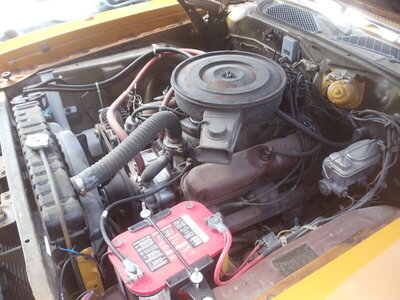Dibbons
Well-Known Member
- Local time
- 7:24 AM
- Joined
- Nov 29, 2014
- Messages
- 4,753
- Reaction score
- 5,465
- Location
- La Paz, B.C.S., Mexico
This is a '72 Plymouth Satellite Sebring Plus 318/auto. I have used 3 voltage regulators, the one that came on the car when I purchased it and two aftermarket units. The same thing with any regulator: no charge at idle speed but charges like a champ at any speed above idle.
This change is verified by voltmeter and by watching the dome light, which gets brighter above idle.
I am not going to worry about for now, because it starts and runs down the highway just fine, including some over 3,000 mile road trips.
However, I was wondering if anyone else has experienced this with their own Mopar charging system? P.S. Once in a while, I believe I have found it to charge at idle momentarily.

This change is verified by voltmeter and by watching the dome light, which gets brighter above idle.
I am not going to worry about for now, because it starts and runs down the highway just fine, including some over 3,000 mile road trips.
However, I was wondering if anyone else has experienced this with their own Mopar charging system? P.S. Once in a while, I believe I have found it to charge at idle momentarily.

















